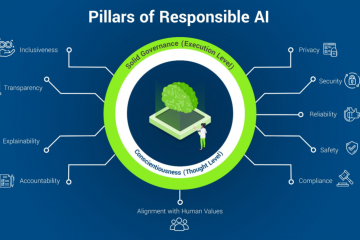Quantum computing, a cutting-edge field at the intersection of computer science, physics, and mathematics, is poised to revolutionize the way we process information and solve complex problems. As we stand in early 2025, quantum computing is no longer a distant dream but a rapidly evolving reality with far-reaching implications across various industries. Let’s dive into the world of quantum computing and explore what makes it so transformative.
The Fundamentals of Quantum Computing
At its core, quantum computing harnesses the principles of quantum mechanics to perform computations. Unlike classical computers that use bits (0s and 1s) to store and process information, quantum computers employ quantum bits, or qubits. These qubits can exist in multiple states simultaneously, thanks to a phenomenon called superposition. This unique property allows quantum computers to process vast amounts of information in parallel, potentially solving problems that would take classical computers thousands of years to complete in a matter of minutes14.
Superposition and Entanglement: The Quantum Advantage
Two key quantum principles give quantum computers their extraordinary power: superposition and entanglement. Superposition allows qubits to be in multiple states at once, exponentially increasing the amount of information that can be processed. Entanglement, on the other hand, enables qubits to be correlated in ways that defy classical physics, allowing for true parallel processing and the potential for exponential speedup in certain computations25.
Quantum vs. Classical Computing
While both quantum and classical computers process data, their methods and capabilities differ significantly. Classical computers use binary bits and perform calculations sequentially, making them excellent for everyday tasks and many complex computations. Quantum computers, however, excel at solving certain types of problems that are intractable for classical computers, particularly in areas like optimization, simulation, and cryptography58.
The Quantum Computing Stack
Quantum computing involves several layers of technology, from the physical qubits to the quantum algorithms that run on them. At the hardware level, qubits can be implemented using various technologies, such as superconducting circuits, trapped ions, or photons. These qubits are then manipulated using quantum gates to perform computations. The development of quantum error correction techniques is crucial to maintaining the delicate quantum states and ensuring reliable computations4.
Applications Across Industries
The potential applications of quantum computing span numerous industries. In pharmaceuticals, quantum simulations could revolutionize drug discovery by accurately modeling molecular interactions, potentially reducing the time and cost of bringing new drugs to market. In finance, quantum algorithms could optimize portfolio management and risk assessment. The automotive industry might use quantum computing for battery optimization and traffic flow simulations. Chemical manufacturers could benefit from more efficient process designs, potentially reducing energy consumption and emissions369.
Quantum Computing in Artificial Intelligence and Machine Learning
Quantum computing holds immense promise for advancing artificial intelligence and machine learning. By leveraging quantum algorithms, AI systems could process and analyze vast datasets much faster than classical computers. This could lead to more sophisticated machine learning models, better predictions, and more efficient task automation. The synergy between quantum computing and AI could unlock new frontiers in pattern recognition, natural language processing, and complex decision-making processes3.
Challenges and Limitations
Despite its potential, quantum computing faces significant challenges. Maintaining quantum coherence—the delicate quantum states necessary for computation—is extremely difficult, as qubits are highly sensitive to environmental disturbances. Quantum error correction and the development of more stable qubit technologies are active areas of research. Additionally, creating quantum algorithms that outperform classical algorithms for practical problems remains a complex task4.
The Quantum Threat to Cybersecurity
While quantum computing promises breakthroughs in many fields, it also poses a significant threat to current cryptographic systems. Quantum computers could potentially break widely used encryption methods, necessitating the development of quantum-resistant cryptography. This “quantum threat” is driving research into post-quantum cryptography to ensure the security of digital communications in the quantum era8.
The Road Ahead
As quantum computing continues to advance, we can expect to see more practical applications emerge. The development of cloud-based quantum computing services is making this technology more accessible to researchers and businesses. While quantum computers are unlikely to replace classical computers for everyday tasks, they will likely work alongside classical systems, tackling specific problems where their unique capabilities provide a significant advantage47.
In conclusion, quantum computing represents a paradigm shift in computational power and problem-solving capabilities. As we continue to overcome technical challenges and develop new quantum algorithms, the potential for transformative applications across industries is immense. From drug discovery to climate modeling, financial optimization to materials science, quantum computing is set to unlock new possibilities and drive innovation in ways we’re only beginning to imagine.



0 Comments